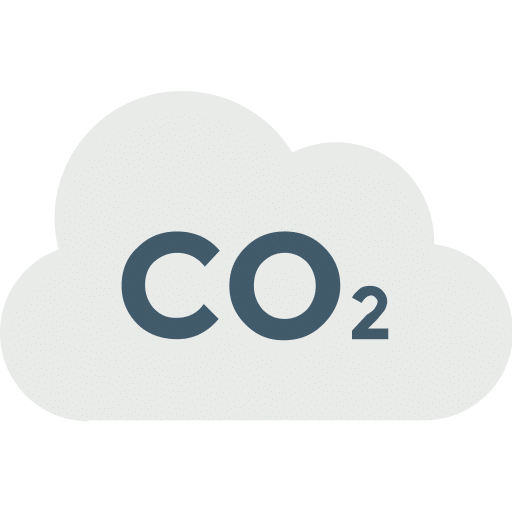
How works Carbon Credit Voluntary Markets
In recent years, as concerns about climate change and environmental sustainability have intensified, the concept of carbon credits has gained significant traction. Carbon credits are a fundamental component of the international carbon trading system, aimed at reducing greenhouse gas (GHG) emissions and mitigating the adverse effects of climate change. In this blog post, we will explore the functioning of the carbon credits market, its key stakeholders, and the mechanisms through which it operates.
Understanding Carbon Credits
To comprehend the carbon credits market, it is imperative to first grasp the concept of a carbon credit itself. A carbon credit represents one metric ton of carbon dioxide (CO2) emissions or its equivalent in other GHGs, such as methane and nitrous oxide. These credits are a form of tradable permits, issued based on the reduced emissions achieved by specific activities or projects that curtail GHG emissions beyond what is legally required.
Carbon Credit Projects
Various types of projects can generate carbon credits, known as Certified Emission Reductions (CERs), Verified Emission Reductions (VERs), or Voluntary Emission Reductions (VERs), depending on the certification process they undergo. These projects can include renewable energy generation, forest conservation, energy efficiency improvements, or waste management initiatives
The Voluntary Carbon Credit Market participants (VCM)
The carbon credits market functions as a platform where entities with excess emissions credits can sell them to those surpassing their emission limits. This facilitates the trading of carbon credits between buyers and sellers, enabling the transfer of emissions reductions and promoting a more sustainable global carbon footprint. Let’s delve into the key participants of this market:
1. Project Developers: These entities are responsible for initiating and implementing projects that reduce emissions and generate carbon credits. They undertake the necessary activities, such as renewable energy installations or reforestation projects, to achieve measurable emission reductions and subsequently validate and register those reductions as carbon credits.
2. Verifiers: Independent third-party organizations play a crucial role in the carbon credits market by verifying and certifying emission reductions achieved by project developers. Their primary task is to ensure that the projects follow approved methodologies, accurately quantify emissions reductions, and adhere to the established standards and regulations.
3. Registries: Carbon credit registries act as repositories for carbon credits, keeping track of their issuance, transfers, and retirements. These registries function as central databases, maintaining transparency and integrity throughout the trading process. Verifiable authentication of carbon credits is crucial in maintaining the integrity and reliability of the carbon market.
4. Buyers: Entities or organizations that have emission reduction targets or voluntarily wish to offset their carbon footprint can participate as buyers in the carbon credits market. These buyers purchase carbon credits to balance their own emissions or to demonstrate their commitment to sustainability. Buyers can include governments, corporations, and individuals.
Importance of certified credits
In the voluntary carbon offset market, where participants voluntarily purchase carbon credits to offset their emissions, the certification of these credits holds significant importance. Certification provides credibility and assurance that the purchased carbon credits represent legitimate emissions reductions and have undergone rigorous evaluation.
1. Credibility and Transparency: Certification ensures that the carbon credits in the voluntary market are legitimate and accurately represent emission reductions. By engaging third-party verification entities, the certification process adds transparency and credibility to the market. This helps build trust among buyers and encourages participation in voluntary carbon offsetting.
2. Additionality and Baseline Setting: Certification ensures that the emissions reductions achieved through specific projects would not have occurred without the revenue generated through the sale of carbon credits. This concept is known as additionality. Certification bodies evaluate the project’s baseline emissions, taking into consideration the emissions that would have occurred in the absence of the project. This process helps avoid double counting of emissions reductions and ensures that only genuine emissions reductions are being traded.
3. Standardization and Quality Control: Certification bodies apply internationally recognized standards and methodologies to assess the projects and calculate their emissions reductions. These standards, such as the Gold Standard, Verified Carbon Standard (VCS), or the Climate Action Reserve (CAR), provide a framework for project certification. Compliance with these standards ensures consistency.
By combining the voluntary carbon offset market with blockchain technology, Arborem is revolutionizing the way businesses participate in carbon credit trading. Blockchain provides a secure and transparent platform for tracking and trading carbon credits, enhancing the efficiency and integrity of the market.
With the implementation of blockchain, Arborem offers a decentralized ledger that records all transactions related to carbon credits. The use of smart contracts automates the process, ensuring that each step, from certification and verification to the actual trading, is executed seamlessly and securely. This removes intermediaries and reduces transaction costs, making it more accessible for businesses of all sizes to participate in carbon offsetting.
Moreover, blockchain technology enhances transparency in the market. All transactions are recorded on the ledger, providing an auditable and immutable record of carbon credit ownership and transactions. This eliminates the risk of fraud and double-counting, further bolstering the credibility of the voluntary carbon offset market.
Arborem’s blockchain-based platform also opens up opportunities for innovative business models. Through tokenization, businesses can tokenize their carbon credits, creating digital assets that can be easily traded and transferred. This allows for fractional ownership, enabling even small businesses to invest in and trade carbon credits.




